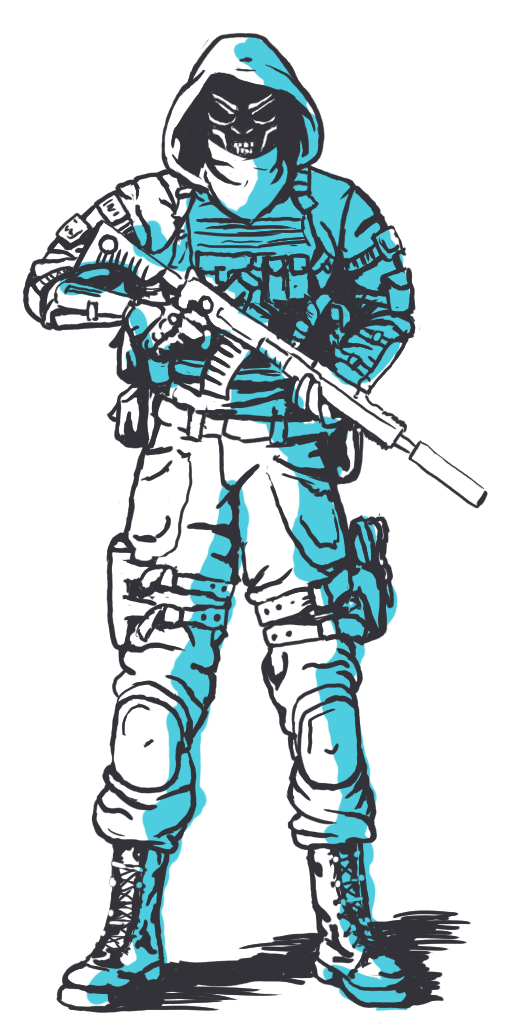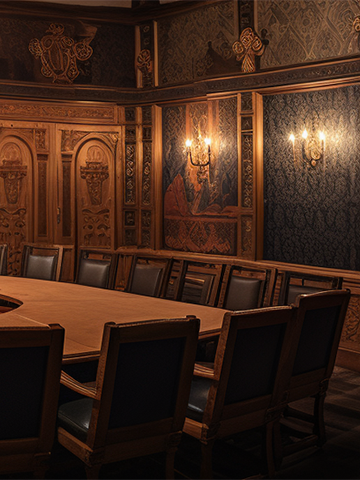Favont
The ultimate starting point for our tale
Favont is an island nation in north Magnus Prime, led by Magi and defined by its strict social order, Aether technology, and adherence to Cosmos. With a population exceeding 60 million, the country is a representative of Magnus Prime’s shared governance, religion, and cultural identity. From the bustling capital of Esprite to its fertile plains and rugged mountain ranges, Favont’s diverse landscape supports its thriving economy, which is built on agriculture, manufacturing, and exports. Favont’s tightly controlled society is reflected in its government, media, and cultural output, ensuring a unified vision of progress and tradition.
history
Main category: History of Favont
Favont's history is recognised beginning with its conquest and subsequent joining of Magnus Prime which aligned it with the laws and cultures that we know today. Despite being a late comer to the continent, Favont has played host to some of the most famous developments in Magnus Prime politics, from Chamberlain to the Reconstruction. While there were several incidents of civil war, and a shift from Malagalese centralised faith, Favont has always been recognised globally as a defender of Magnus Prime values.
1st CenturySee First Century Favontille History
- King Leric I of Peren invaded Marterra and renamed it Favont The marterrans disappeared leaving the natives, the ananans, behind.
- Princess Aeryn, his sister, who had arrived in Marterra prior to the invasion, was found changed into a monster by the Marterrans. Leric had her imprisoned.
- Governance was divided between Favont and Peren, with Leric forced to travel between both countries regularly to quell uprisings from his nobles, including his son, Rollo. His other sons, Leric II and Oswyn I also found the same issue.
- A succession crisis began when Oswyn’s only son died in a sailing disaster that killed almost 300 of Magnus Prime’s nobles, leaving no direct heir.
- After Oswyn’s death his nephew, Stefen became the king, which Oswyn’s daughter, Mathilde contested, leading to a civil war.
- Mathilde's son, Oswyn II became the next king and he rebuilt the country and restored laws.
See Second Century Favontille History
- Oswyn II appointed his own Archcleric as he wanted more governance over the practise of Cosmos in his land.
- The Archcleric defied him, leading Oswyn to have him executed, a decision he came to regret.
- Oswyn II expanded his territory, conquering Toreland and Hetela, and enlarging the borders of Peren.
- Magnus I, his son, is known for his efforts in the third crusade, reclaiming Midden from Zimbistro. His campaigning meant he spent most of his reign away.
- Jan, Magnus’s brother, inherited the throne, but was unpopular due to high taxes and the loss of Peren.
- Oswyn III succeeded Jan. He was deeply pious, believing that Ananans truly were demons and imposed further restrictions on the population.
See Third Century Favontille History
- Aegar I launched campaigns in Hetela, aiming for full Favontille control, but faced continued resistance.
- In the Stiriphese, uprisings were suppressed, castles constructed, and whole Ananan communities destroyed.
- Toreland was retaken, and the population experienced extreme famines.
- Aegar II was weaker than his father and lost territory in Hetela and Torelund, alienated the nobility, and was weakened by court scandals.
- Aegar III restored order, reclaimed Toreland, launched campaigns in Peren to regain control of the land, and won decisive battles in Hetela.
- His son, Aegar the Golden Prince became a famous military leader during these campaigns, alongside his second in command, Lord Pyrus.
- In 283, the Shadow Plague struck Favont, resulting in a third of the population dying. Many blamed the Ananans as the cause of the plague.
See Fourth Century Favontille History
- Aegar the Golden Prince released Aeryn DeSteffen and used her knowledge of the Stiriphese to improve relations there. Lord Pyrus joined her and became her lover, and the second Nightwalker.
- Magnus II ruled in isolation, relying on only a few noblemen to advise, which alienated the rest of the court. When he disinherited his chief advisor's son, Oswyn and exiled him to Peren, Oswyn returned with a force and easily deposed him.
- Oswyn IV took the throne , during which time he squashed a number of rebellions, particularly in The Stiriphese.
- Oswyn V, his son was known as the warrior king. He fought at the battle of Arlene and afterwards, he captured most of northern Peren and married the Queen of Peren to secure the land.
- Oswyn VI became the next King at only 8 months old, and through his mother, he was also King of Peren. Unlike his father he was passive and timid, and very quickly he lost most of Peren to the nobles of the country.
- He suffered a mental health illness at which point, in the absence of his governance, civil war broke out between his family of Weslea, and Easlea.
- Aegar IV, of Easlea, seized the throne, and Oswyn VI was imprisoned at Ravenbay Tower.
See Fifth Century Favontille History
- Oswyn was restored to the throne but only a year later, Aegar IV retook power and killed Oswyn's only son. He put Oswyn back in prison, where he died.
- Aegar IV reigned peacefully for 12 years despite threats from the claimant of Weslea, Oswyn Lockinge, and an attempt to restart the war in Peren. His son, Aegar V inherited the throne.
- Aegar V's brief reign was dominated by his uncle, Magnus and before he could be coronated, Magnus sent Aegar to Ravenbay Tower where he died shortly, and mysteriously afterwards.
- Magnus III had a short and tumultuous reign which ended when Oswyn Lockinge of Weslea returned from his exile and defeated Magnus in battle, becoming Oswyn VII.
- Oswyn VII restored power and stability to Favont by marriage to the daughter of the Duke of Easlea. He was financial astute and protected the countries industries from outside interests.
- His son, Oswyn VIII, was known for restructuring the church of Cosmos. After they denied him the right to divorce his wife, Oswyn sought independence for Favont affairs away from Malagal, ensuring clerics that sat in the ecclesiastical chamber were clerics of Favont.
- He became the first Favontille monarch to rule as King of Torelund and he created the Royal Navy and increased Favont's dominance of the sea, but he also was lavish in his spending, and engaged in many fruitless battles with Peren and Hetela.
- With faith under the spotlight, the Corbenite movement emerged, using torture and fear to locate those who had sympathies with Ananans or Nightwalkers, believing that the country had become lax to their threat. Both Ananans and Nightwalkers were denied the right to leave The Stiriphese.
- Oswyn's son, Aegar VI continued his father's religious reform but he was unsuccessful in war, loosing all land in Hetela and Peren, and he died aged only 15.
- His sister, Anniliese I, reversed his reforms, and the Corbenites, who were once investigating those who were pro-Malagal, were now investigating those who were anti-Malagal.
- Genevieve, her younger sister, took the throne afterwards. She was in prison when she was declared Queen. On her ascension, the reforms were reversed again.
See Sixth Century Favontille History
- Genevieve I secured naval dominance, defeating the Marwor fleet who were invading to bring Favont back to Malagal Cosmos. Her reign was famed for naval exploration and cultural developments, but she died childless, ending the Lockinge dynasty.
- Alathic I of Hetela, and Genevieve's cousin united Favont and Hetela, with a peaceful reign, despite war beginning to rage in Magnus Prime as other countries also sought independence from Malagal.
- His son, Terys I of Peren reversed these reforms, restoring Malagal’s authority and sparking civil war led by Jan Chamberlain, who called for religious independence and local representation, and more input from nobles.
- The quarrel continued for 14 years, in the Grand Assembly and on the battlefield, with some aligning with Chamberlain that the nobles should have more authority, while some maintained the absolute authority of the king, an argument that even divided some families.
- When Terys I died, his son Terys II became King with many believing that the civil war would continue, but at his inauguration, Terys II had Chamberlain assassinated in public by a Nightwalker, and used the occasion to declare a more liberal future, where the absolute king took advise from nobles, who in turn took advice from elected local council members. The presence of a Nightwalker, approved by the King put a sudden end to the Corbenite movement.
- However, the restoring of Nightwalker freedoms created a new civil war, purely in The Stiriphese. Years trapped had fuelled animosity, which came out when they could move freely. Followers of Aeryn DeSteffen were committed to the 'values' of the stiriphese, placing an importance on nature and rejecting hierarchy in favour of equality. Terys II rejected this belief too, and gave sanctuary to General Arlene Dawes, the leader of the separatists, in the Black Hollow Mountains.
See Seventh Century Favontille History
- Favont entered an age of order, refinement, and redefinition following a century of reform and conflict.
- Alathic II, Terys' younger brother, took the throne to much support despite knowing he was pro-Malagal. It was hoped that he would keep his faith personal, but when he stopped several bills in support of Malagal, the nobles invited his daughter, Anniliese, and her husband, Leric of Tredigan to Favont.
- Power passed to Anniliese II and Leric III who deposed Alathic. Leric III was a military commander who raged several wars that defended the religious opinion of Favont. In Hetela, where the deposed Alathic returned, there was a move to assassinate Leric, and in response he massacred most of the nobles.
- Anniliese and Leric had no children, so the crown passed to Queen Adelaide. During her reign, the age of Enlightenment began. Magi began developing production methods that allowed non-magi to create technologies, and use them without compromising the sanctity of The Magi. This allowed the Magi to turn to higher pursuits.
- Adelaide also did not have children, and so the crown passed to her cousin, Reynaud, a prince of Etoroth. Alathics, who wished to see the King of Hetela on the throne instead, unsuccessfully attempted to depose him.
- Reynaud I was very popular, and his respect of Favont governance and support of Enlightenment.
- His son, Reynaud II inherited the throne who depended heavily on the Great Assembly for rule, deferring for guidance. Once again, the Alathics attempted to depose the King, but a battle in Hetela brought their revolt to an end. Reynaud II was most famous for having numerous mistresses and many illegitimate children.
- Reynaud III inherited the throne at the end of the century. He is credited with starting Standardisation: bringing the lifestyle of Magnus Prime to other countries around the world, particularly Moneterra, Quatis, Niphan, and Zimbistro.
See Eighth Century Favontille History
- Standardisation took hold in this century with ambassadors of Favont travelling the globe, bringing their technology and culture to other lands, and re-educating the local population to match the attitude of Magnus Prime.
- Reynaud IV took the throne. He led an extravagant lifestyle, supported by Favont's growing wealth. His style influenced the period greatly, particularly in etiquette, dress, and architecture.
- Reynaud's brother, Leric IV took the throne, and increased the country's reliance on slavery, establishing laws that better defined its process and the rights of those involved.
- His daughter, Genevieve II increased efforts in standardisation, particularly in Krisdar, and Parapius which became popular destinations for Favontilles to holiday and work. She made political matches for all of her children, marrying each to a ruler in Magnus Prime.
- During Reynaud IV's rule etiquette standards dropped, which Genevieve greatly improved. Though she never tried to renew her ancestors interests in owning Torelund and Hetela, she regularly visited, making them popular holiday destinations. During her reign, Standardisation and Enlightenment raised a middle class of educated humans.
See Ninth Century Favontille History
- After Genevieve's husband died she retreated, spending increasing time in Hetela, leaving the Grand Assembly in the full control of the nobles. During this time, slavery in Favont increased. With most of the industry leaving the country, due to standardisation, more business started to employ slaves to reduce their costs.
- Genevieve was one of the longest reigning monarchs and when her son, Aegar VII took power, now an elderly man, he continued to in the way he had as a prince: never attending the grand assembly, and travelling the world representing Favont.
- His son, Reynaud V took the throne, but due to increasing global dislike of Magnus Prime's enforced standardisation, Favont was soon involved in war.
- In 848, a Chasvokic prince was assassinated in Tredigan, prompting Chasvok to declare war against Tredigan, which resulted in all of Magnus Prime coming to defend. Enwa came to protect Chasvok, while countries, such as Moneterra, Quatis, and Krisdar came to support Magnus Prime.
- It quickly became an ideological war fought between standardisation, and communisation, the later of which Enwa supported. The continent was fearful that Enwa's radical policies would infect Magnus Prime and so they fought to defend their ideals. The war was mainly fought in Tredigan and Peren, as well as Krisdar and Capra.
- The first world war ended in with an armistice between Magnus Prime and the Winter Nations, which included Enwa and Chasvok. However, their influence did not end, and Torelund plummeted into civil war as they dealt with these two ideologies.
- In 870, Reynaud IV became the new King During his reign, Favont stepped back from their involvement in standardisation, preferring to focus on internal affairs.
- In Marwor, communisation was increasing in popularity, drawing concern. Upon further investigation in 873, it was found that Enwa was funding this ideology, as well as the one in Torelund. and Magnus Prime declared war.
- The action took place in Favont, Marwor, and Peren, as well as Togotal, and Torremen. While Magnus Prime defended its ideals of hierarchy, other countries, particularly those in the very north and very south, also known as the Winter Nations, believed in more radical governance.
- The second world war ended in 879, when Tiral, the capital of Enwa, was surrounded, forcing the nation's leader, Ketla, to commit suicide. It ended later in Torremen, when Moneterra released a bomb to destroy the insurgents based there, the result of which created an uninhabitable desert, and destroyed the lives of ,millions.
- Following the second world war, Favont also began to experience unrest caused by ananan terrorist group, Terva. They set off explosives, assassinated key figures, including Reynaud's brother, and even travelled to other nations to commit acts in the name of Ananans. Their actions fuelled new hatred towards the Ananans.
- Reynaud's son, Leric V took the throne in 899, by this point, there were no major industries left in Favont, as most were now in other countries, the slaves used for labour, had also been involved in war, and with no industry there seemed no reason to replace them. While Favont was a wealthy country, the focus was no longer upon them as a global leader.
See Tenth Century Favontille History
- Leric V ruled until 933, in which period the slump in industry increased. Cities became increasingly unattractive, with most returning to the countryside, which was more pleasant to enjoy as there was no major farming happening.
- Terys III, Leric's son, inherited the throne. By this point Favont was known best as managers of situations in other countries, and while most global business were based in Favont, most work was carried out in other countries.
- In 935, his wife, Queen Adelaide was assassinated in Stefan. Enwa claimed responsibility, even though the Ananan assassin had originally claimed victory for Terva.
- War followed with Enwa and the Winter Nations but this time, there was no consistent fighting, instead it was based more on espionage, with only occasional engagement, and a lot of terrorism attacks.
- Desire for a attack began to fade, with both factions injecting so much money into defences that daily life was forgotten and a recession was declared. by 940, the war was over.
- To quickly end the recession, in 941, Favont formalised a new slave class: all those in poverty and every Ananan, regardless of status, were arrested, declared state property, and sold to homes and businesses. With a strong return to slavery, this effectively ended the recession in Favont, brought back industry, and restored Favont to global policy leaders. This change was adopted by Magnus Prime, and restored their strength.
- Following, Favont became a stable utopia, creating an orderly peaceful life, and return to their original beliefs of hierarchy and the might of the Magi.
Geography
Favont is an island in the continent of Magnus Prime. The countries nearest are Peren, Hetela, and Torelund. The surrounding waters are The Perenx Strait, The Favontille Channel, The North Sea, The Prime Sea, and the South Gelidum Ocean
Overall, the climate is temperate, with prevailing winds from the south west bringing warmer air, and the coast line and mountains experiencing frequent fog and rain. Snowfall is common in the upper regions in winter, while in summer, the waters surrounding the country are normally warm enough to swim in.
Favont can be divided into seven regions, each with a distinct geographic appearance:
- Topography: Low elevation with gently rolling countryside. Fields are large and enclosed, mostly pasture with scattered woodland and hedgerows. The landscape becomes slightly more undulating further inland towards Burrhampshire. Settlement is dense but controlled by protected greenbelt policy.
- Climate: Temperate, with mild winters and warm summers. Rain is regular but rarely extreme. The region is sheltered from major weather systems, with consistent cloud cover and low seasonal variation.
- Geographic Features: Surrounds the vast Raven Bay. The capital, Esprite, sits at the innermost point of the bay. Coastline is estuarine with managed embankments. Inland watercourses are controlled, with many canalised to reduce flooding.
- Natural Hazards: Historically prone to flood, now mitigated through major flood defences and river engineering. Sea fog in the bay is common due to shifting coastal currents.
- Land Use: Primarily commercial and residential. Tertiary industries dominate. Agriculture is present but secondary, mostly grazing.
- Transport & Access: High density of roads, rail, and public transport. Trams, subnautica lines, and ferries operate throughout. Transport infrastructure is highly centralised.
- Settlement Pattern: Continuous sprawl of towns and villages with strong transport links to Esprite. Architecture is defined by golden sandstone. Wealth distribution is skewed toward privilege; region is economically dominant.
- Regional Identity: Seen as the administrative and cultural centre of Favont. Associated with order, affluence, and tradition. Recognisable by architectural uniformity and managed landscapes.
West Favont
- Topography: High elevation with rugged uplands, moors, and exposed coastal cliffs. Inland terrain is steep and uneven, with few flat areas. Vegetation is sparse, dominated by ferns, heather, and hardy grasses. Trees are wind-shaped and scattered.
- Climate: Cold, wet, and storm-prone. Strong westerly winds prevail year-round. Rainfall is frequent and intense, with snowfall common in upland areas. Sunshine is limited; overcast skies and temperature drops are regular.
- Geographic Features: Forms the western edge of the island, including the Ravenbay peninsula. Notable for its sheer coastal cliffs, chalk stacks, and highland lakes. The chalk cliffs of Ophir are a symbolic national landmark.
- Natural Hazards: High winds and violent storms, especially along the coast. Risk of landslides in steep inland areas. Fog and snow reduce visibility in winter. Coastal erosion is active in cliffside settlements.
- Land Use: Dominated by quarrying, mining, and sheep grazing. Major resources include quartz, slate, granite, and metal ores. Farming is limited to upland pasture. Industrial use is extensive but largely confined to valleys and transport hubs.
- Transport & Access: Coastal ferries and intercity trains link major settlements. Rural access is limited to narrow roads and bus networks. Infrastructure includes aqueducts, reservoirs, and reinforced harbours for industrial shipping.
- Settlement Pattern: Major cities are coastal or valley-based: Catsburg, Helmfirth, Black Hollow, and Kilerth. Rural populations live in compact, stone-built villages. Buildings use granite or flint with slate roofs.
- Regional Identity: Associated with stoicism, hardship, and strength. Seen as bleak but beautiful. The region appears in folklore as a site of tragedy and endurance. Culturally distinct, with a strong sense of resilience and pride.
Upper Midlands
- Topography: Dominated by the Stiriphesian and Pass mountain ranges, the region features sharp peaks, craggy ridges, glacial valleys, and mountain tarns. Mount Steffen is the highest peak, beneath which lies the underground city of Steffen. The terrain softens at the region’s outer edges, with lower moorland and rolling uplands in the southwest.
- Climate: Extremely wet and overcast, with thick, fast-moving fog. Snowfall is heavy and prolonged in higher elevations, often covering peaks for over half the year. Rain is frequent year-round. Calm, clear days are rare and often regarded with reverence.
- Geographic Features: Glacially carved valleys, steep-sided corries, scree slopes, and upland bogs shape the interior. Rocky outcrops and small freshwater lakes dot the landscape. Coastal cliffs near Lantyan are rugged and battered by strong tides. Peat beds and heathland occur at mid elevations.
- Natural Hazards: Blizzards, sudden temperature drops, and high winds are common in winter. Fog can arrive without warning, causing disorientation. Flooding occasionally affects valley settlements and mining areas. Avalanches are possible in the highest passes.
- Land Use: The Stiriphese duchy restricts industrial exploitation to preserve its landscape; only limited mining of slate, metals, and precious stone is permitted. Tourism is the dominant sector here. Elsewhere, in Northford and Armsbridge, large-scale mining and heavy industry are common. Sheep grazing is widespread across all elevations.
- Transport & Access: Major cities on the periphery are served by national roads, trains, and buses. Rural areas rely on regional bus routes. The city of Steffen can does not permit cars or other vehicles underground. Instead special trains are used.
- Settlement Pattern: Settlements cluster in valleys, around lakes, or at the base of mountain slopes. Peripheral cities serve as trade and administrative hubs. The underground city of Steffen is a cultural and governmental centre. Villages in the Stiriphese are oriented toward tourism and heritage, while Northford and Armsbridge host industrial communities tied to resource extraction.
- Regional Identity: Seen as the wild heart of Favont. The Stiriphese duchy is symbolic of endurance, mystery, and national heritage. Its people are viewed as stoic and independent. The region’s mountains are national icons, appearing on coins, stamps, and emblems.
- Topography: Almost entirely flat and low-lying, with extensive salt marshes, mudflats, and reclaimed land. Inland areas are gently undulating, transitioning into fertile farmland. Large portions of the coastline are protected by dykes and man-made embankments. Much of the land sits barely above sea level.
- Climate: Mild and breezy, with warm summers and few weather extremes. Winters are cool but not harsh. The region experiences consistent sea breezes and long daylight hours in summer, contributing to a relaxed, holiday-like atmosphere.
- Geographic Features: Characterised by open coastal wetlands, tidal inlets, and estuarine plains. Inland canals and drainage ditches cut across the landscape in a controlled grid pattern. Salt pans and silt beds are common near the shore, with embanked fields inland. The coastline includes wide sandy beaches and shallow tidal zones.
- Natural Hazards: Flooding remains a persistent risk, particularly during high tides or storm surges. Drainage systems and reinforced dykes reduce the danger but do not eliminate it. Heavy rainfall can overwhelm drainage in inland farmland.
- Land Use: The coast supports cockle and mussel fishing, salt extraction, and coastal tourism. Further inland, large farms grow vegetables and cereals on drained land. Salt harvesting and fishing remain vital local industries, with artificial salt flats managed year-round.
- Transport & Access: Major cities such as Prallport, Sutlea, and Dalmleigh are well-connected by rail, ferry, and road. However, much of the marshland has limited access due to weight restrictions—main roads and trains avoid these zones to prevent damage. Smaller roads and boat routes serve the wetlands.
- Settlement Pattern: Settlements cluster along the coast or on higher inland ground. Coastal towns serve both industrial and tourism functions. Scattered farming villages and isolated houses dot the reclaimed land. Infrastructure tends to be lightweight and modular, allowing adaptation to seasonal flood risk.
- Regional Identity: Known for its calm pace, open skies, and historic relationship with the sea. Its people are seen as resilient and practical, skilled in land management and water control. The region is culturally tied to the tides, and its reclaimed landscapes are a quiet point of national pride.
South East
- Topography: A rugged peninsula defined by craggy cliffs, narrow coves, and windswept heathland. The terrain is hilly and uneven, with steep slopes leading down to sandy bays and hidden caves. The interior features gorse-covered moorland and exposed rock.
- Climate: Highly unpredictable. Winters are wet and stormy, while summers are warm with sharp coastal breezes. Sea mists are common. The area receives strong Northern Sea winds year-round, often intensifying into sudden storms.
- Geographic Features: Surrounded by sea on three sides, with an irregular and dramatic coastline. Tall cliffs drop into the ocean, interspersed with wide, sandy surfing beaches and deep caves. Tin veins run beneath the land, especially near the coast.
- Natural Hazards: Subject to coastal erosion, powerful waves, and sudden storms. Flash floods and landslides occur near steep coastal paths. Sea access can be dangerous during squalls, with frequent shipwrecks historically.
- Land Use: Fishing and tin mining are traditional mainstays, with coastal communities centred around harbours. Surf tourism and small-scale farming also feature. Inland heathland is mostly undeveloped due to terrain and exposure.
- Transport & Access: Major port cities like Selebor, Grossmouth, and Greenmouth are well connected by train, subnautica, and ferry. However, travel toward the peninsula’s tip becomes more difficult—roads narrow, and rail lines end. Remote villages rely on boats or local buses.
- Settlement Pattern: Port towns cluster along natural harbours. Inland settlements are sparse and built around old mining routes or cliff-top paths. Many communities are remote, with strong ties to sea trade and fishing. Coastal caves often hold cultural or historical significance.
- Regional Identity: Known for independence, maritime tradition, and wild scenery. Pirates and shipwrecks are part of local folklore. The sea is ever-present, and the dramatic coastline is a symbol of both beauty and danger.
East Favont
- Topography: Characterised by rolling hills, dales, and low, sheltered valleys. Elevation varies but never becomes mountainous. Numerous streams and small rivers cut through the landscape, feeding into broader floodplains. Terracing is common in cultivated areas.
- Climate: Cool and damp, with long winters and dependable snowfall. Cold easterly winds are common. Summers are warm and pleasant, supporting lush grasslands ideal for grazing. Rain is frequent year-round.
- Geographic Features: Chalk and limestone bedrock shape the region’s appearance and agriculture. Forests fill many valleys and slopes. The coastline is mixed, with rocky cliffs and sections of soft, eroding shore. Holm sits on a river delta, while Louset is naturally protected by an offshore island.
- Natural Hazards: Persistent rainfall leads to regular flooding, especially in river valleys. Coastal areas are at risk from erosion and storm surges. Ground remains wet for most of the year, impacting transport and farming conditions.
- Land Use: Dominated by pastoral farming—sheep in the hills, cattle in the valleys. Wool and dairy (especially cheese) are major outputs. Fishing supports coastal towns. Cloth mills, powered by water, cluster near rivers. Lime mining and timber are secondary industries.
- Transport & Access: Holm and Louset function as busy ports with river access. Inland, roads and rail weave through hills and dales. River valleys guide many routes. Public transport reaches all towns, though rural areas are more isolated.
- Settlement Pattern: Villages and small towns are nestled in valleys or along rivers. Slate and limestone buildings are common. Industrial towns developed around rivers and mills, while upland areas remain sparsely populated.
- Regional Identity: Proud, resilient, and strongly independent. Often referred to as “the Angel Country” due being considered so beautiful that the Angels must have blessed it. Known for its natural beauty, strong dialects, and production of wool and cheese. The dales and upland farms are iconic symbols of East Favont.
- Topography: Very flat, open landscape with expansive agricultural plains. Soil is soft and fertile, shaped by centuries of cultivation. Few natural woodlands remain; land is divided by ditches and drainage systems.
- Climate: Mild and maritime, with steady conditions year-round. Rainfall is moderate, sunshine reliable, and extreme weather rare. Ideal for consistent agricultural productivity.
- Geographic Features: Coastal edge is low-lying and eroding, with long sandy beaches and salt marshes. Inland, canals and straightened rivers define the region. The open sky and lack of elevation give sweeping views.
- Natural Hazards: Soil erosion and coastal retreat are long-term issues. In summer, cracked ground and dust eddies are common. Occasional flooding occurs when canal networks overflow.
- Land Use: Entirely shaped by agriculture. Vast farms dominate, producing cattle, grain, and vegetables. Land is parcelled into geometric fields, with few hedgerows or tree cover.
- Transport & Access: Dallen is a major port; Haltwhistle is a central train junction. Roads link towns, though minor routes in rural zones are sparse. Buses serve villages. Canals are popular for both tourism and light freight.
- Settlement Pattern: Small towns and villages scattered across open land. Bungalows and low-rise housing are common. Population density is low outside urban centres, with a strong presence of retirees and farming families.
- Regional Identity: Known for a peaceful, steady pace of life. Associated with agriculture, tradition, and quiet pride. The flat fields, canals, and direct speech of its people make North Favont easily recognisable.
Politics
Main category: Law & Politics
Favont follows the same political structure as the rest of Magnus Prime with an absolute monarchy supported by two chambers.
Absolute monarchy supported by a purely Magi oligarchy
Foreign Relations
Within Magnus Prime
Good
They have not always been perfect. As an island away from the mainland, Favont has long since preferred to make its own decisions on matters as opposed to being dictated by the Malagal Church of Cosmos. Since Oswyn VIII separated the country, this has often caused contention, and many religious wars. However, since Reynaudic times, Favont has been respected by the rest of Magnus Prime for its naval capabilities, Magi education, and the conduct of the Favont Church of Cosmos. During the time of standardisation, Favontilles travelled the world with other parties from Magnus Prime, and helped developing nations improve infrastructure and their political systems.
Outside Magnus Prime
Mainly Poor
Favont's treatment of the Ananans has caused contention since the times of invasion, and during the Reconstruction, many humans and Ananans fled, arriving in countries such as Niphan, Capra, Enwa, and Hedestadt. While all of Magnus Prime practices slavery now, Favont was the first to initiate it. Some countries, such as Moneterra or Krisdar which were greatly influenced by Magnus Prime during the time of standardisation, have a lot of respect for Favont and Magnus Prime in general, and even helped defend the continent during the world wars.
Respected within, seen as cruel outside
Favont's Foreign Policy
Since World War III, Favont, with the rest of Magnus Prime, have chosen to isolate themselves from the rest of the world, citing dangerous foreign influence through media and imports. A culture has been created to show items that are 'foreign' are unpatriotic, harmful, and do not respect the values of Favont.
Emigration, Immigration, and Vacation
Emigration to countries outside of Magnus Prime is strictly controlled, and immigration is impossible. After the war, many immigrants were required to leave, especially if they were not legally allowed to stay permanently, or had criminal records. Holidaying outside of Magnus prime is permitted, but has been deliberately made very expensive, whereas travel around Magnus Prime is very easy and affordable, and they even encourage other countries to come and visit and holiday.
Intelligence
Favont willingly and freely shares intelligence with all countries in Magnus Prime following a pact made during World War I. They routinely gather intelligence from all other countries across the world by operatives placed there, and will often employ their officers to create situations that will work in their favour, such as setting a forest fire so that country has to buy their wood from Magnus Prime.
Policy is controlled to represent Favontille ideals only
Map of Middengeard
Law and Justice
The Laws of Favont are discussed in the grand assembly after first being reviewed by the two chambers. The monarch will make a final decision, and this will be created into law by the Supreme court of Favont. Some of the country's laws date back to the time of Leric I, though they have been updated periodically to reflect the needs of the time.
Police
There is a national police guild which has divisions in every duchy. The police represent the laws of the government, but this can be extended to protect individual businesses, at a cost, as well. For example, a factory may wish to hire regular security, so they would contact the NPG, and for a fee, would also provide a security service. This level of work is usually only issued to very low grade members.
All public security and law enforcement is handled by the NPG
Community Policing
Communities across Favont are very close, based on that each community has a temple that they must attend. After temple, people gather at the haven and share food (within their class) and it is often here that local issues are discussed. Community members who do not attend the Temple, to those who they think might have committed a serious crime, are discussed with key community figures opting to speak to this person and find out if there is any way they can be helped, or if they need to be reported to the authorities. Reporting isn't always seen as the first act as the community would prefer to be involved first. If the member can not, or will not be helped, then they will report.
But first, a community will always look out for its members
'Do you think if anyone would notice if I did not attend the Haven?'
'I think it would be all anyone would notice.'
Princess Listelle drew in a deep breath. 'Well, crumbs,' she stared up at the tranquil blue sky. 'If I go, they'll talk about my divorce... or worse, some petty rumour about you, and if I don't go...'
'They'll always talk about you one way or another, Your Highness.'
The laws of Favont can be separated into three categories
Criminal Law
- Theft
- Rape
- Murder
Religious Law
- Divorce
- Name Change
- Blasphemy
Civil Law
- Fraud
- Morality
- Anti-government
Trials take place privately without media or public access. Only after the trial is completed are transcript made available. A court consists of a judge and a church representative, who are both always Magi. They listen to the opposing legal teams, which can include humans, and make a decision, to either dismiss, or to punish. Minor infractions, such as traffic violations, can be issued without a court. The System will automatically remove a fine from a person, and provide photographic evidence as to why.
Punishment is based on class
| Class | Murder | Rape | Fraud | Theft | Blasphemy | Terrorism* |
|---|---|---|---|---|---|---|
Magi | Fine to be paid to victim's family, and house arrest for 1 to 3 years | Fine to be paid to victim's family, amount based on victim's class | Any money gained to be repaid | Stolen goods, or value of, returned with fine 10% of the value | No charge | Fine to be paid to government and house arrest for 2-3 years |
Nightwalker | Execution by sunlight if it was pre-meditated, 50 years imprisonment if it was not. | 50 years imprisonment | Any money gained to be repaid | Stolen goods, or value of, returned with fine 20% of the value | No charge if of Magi origin, public prostration at the temple if human | Imprisonment for 50 to 100 years |
Human | Magicide would result in execution, Homicide would result in life imprisonment in hard labour camp | Rape of a Magi would result in execution, otherwise would result in 5 year imprisonment in hard labour camp | Any money gained to be repaid, plus 50% interest | Stolen goods, or value of, returned with fine 50% of the value | Public prostration at the temple, fine to be paid if directed at a magi | Life imprisonment to five years in hard labour camp |
Slave (inc. Ananans) | Execution | Execution, unless another slave was raped, then public whipping | Whipped, then sent to a hard labour camp | Branded, then sent to a hard labour camp | Kept in stocks for 2 days | Public whipping and sent to hard labour camp |
*Terrorism includes anti-government acts such as distributing anti-propaganda, but does not include violence or attacks
Punishment for crimes reflect the hierarchy of the country
Military
See Also: Military of Favont
The core armed forces of Favont are made up of The Royal Navy, and the Royal Army. The monarch is Commander in Chief, while one of the members of the noble chamber serves as their Secretary of Defence, as chosen by the monarch themselves.
The SDA and Night Command together form the intelligence arm of the forces. the SDA (Strategic Defence Agency) gathers information, and Night Command act upon it, abroad or overseas.
The armed forces defends Favont's interests abroad, performs combined drills with other armies in Magnus Prime, and helps internally during moments of crisis
Who can join?
Any species, as long as they're not a slave, can join the armed forces and even make ranks such as General.
Nightwalkers make up a large portion of the forces, as they are required to provide 100 years of service. After their mandatory time, they can choose to stay or leave. Humans and Magi are normally required to serve at least six years before they can leave.

Any freeman can join and defend Favont
Economy
The currency of Favont, and all of Magnus Prime is the Aurum (₳), which consists of 100 Merin (₥).
Since the reconstruction, industry in Favont has become revitalised. They now have a major car and aetheronics industry which exports goods around the world, and are well respected in the film, fashion, and gaming world.
Aether Technology
See Also: Aether Technology
The Magi of Magnus Prime all have the ability to produce and control an element known as aether. Aether is a force, which, when placed in a quartz crystal, can power technology. All technology in Magnus Prime is controlled with aether, and while humans can use it, only the Magi can interface with it, creating custom settings suited to their needs. They also have access to more advanced medical equipment, knowledge databases, video call systems, and weapons that humans and ananans can not use.
To protect the power of the Magi, they have many laws regarding the use of aetheronics by humans and ananans.
- Products can only be used as sold. No tampering or customising.
- A quartz crystal can not be taken from one product and placed in another.
- Certain equipment, such as computers, require a face scan or fingerprint to use to confirm their species/class. It can not be falsified, or circumvented.
- If a quartz crystal is broken, it must be reported.
All technology is powered by aether, and controlled by the Magi
Energy and Resources
Energy
Favont has hundreds of power stations, often found on the outskirts of towns and cities, that supply aether through cabling to homes and businesses in that area. Power stations are large and very grand constructions that house thousands of batteries made up of aether imbued crystals. Each week, a Magi arrives at the station and charged the aether batteries. This is often revered as an important ritual.
All energy comes from aether, including heating, light, cooking, and power for vehicles and equipment.
Aether is the only energy source
Exported Resources
Favont has a large number of resources that it exports globally, including aetheronics (white goods, TVs, phones, and computers, cars and bicycles), media (films, games, and fashion), raw goods (timber, raw quartz, metals, and stone), and food (cheese, wine, fish, meat, and cereals).
Slaves are also exported, and imported throughout Magnus Prime on the international Helot market. Buyers might prefer certain skills, appearences and languages which this market caters for.
Imported Resources
Favont encourages its citizens to always buy locally, but when this is not possible, imported resources only come from Magnus Prime, including any form of media. Outside influence is prohibited in Favont and is considered unpatriotic.
Favont exports... but rarely imports
Transport
See also: Transport in Favont
Public transport is a popular and affordable means of travel for all classes. All vehicles use aetho-magnetics to run, so they are clean, relatively silent (just a little hum) and have good suspension. With a dedicated workforce of helots, all public transport is kept clean and runs regularly and efficiently.
- Train: for long distance travel between cities, and freight carrying
- Tram: for inner city travel
- Bus: for rural commutes, with regular stops and services
- Car: Favont has a revitalised car industry. While trucks transport goods, cars are used for personal travel where, or when public transport does not suit
- Sub-nautica: underwater shuttles that link Favont with other countries in Magnus Prime. These shuttles travel rapidly through tubes and are connected on the land by trains.
- Ferry: public boats that move cargo, and people around the coast and rivers.
Public transport is very good, and is used by all
Demographics
Throughout history in Favont there has been a move of people from rural areas, to cities, and back again. During the industrial slump, following world war II, those who could afford to, left the cities for the countryside. However, after The Reconstruction, the countryside increased in agriculture, mining, and forestry, while cities became clean with plenty of parks and green spaces and a thriving and safe social life, causing many of the middle class to return to an urban lifestyle.
The population of Favont totals 60,620,000. See the map below for the 15 most populous cities in Favont
The Peoples of Favont
Favont is unique in the world of Middengeard in that it is the only country which has more that two species occupying the land. However, the majority of the population is still human.
Magi
The ruling class who have the ability to produce, manipulate, and integrate with Aether, an elemental force that powers all technology. All countries in Magnus Prime have a Magi ruler, and the culture of the continent supports the ideology that they are superior.
Nightwalkers
An immortal people made up of humans and Magi who have undergone conversion. For this they must spend 100 years in service to the armed forces of Favont, and it also means they burn in sunlight and must drink blood monthly to survive. There are two factions, The Stiriphese, who are liberals, and Black Hollow, who are conservatives.
Ananans
The natives of the land, left when the Marterrans disappeared. Each Ananan can create and manipulate an element, either fire, wind, water, earth, or the mind. They are disliked by most Favontilles and are considered dangerous. For almost a thousand years they have been living isolated in the mountains of The Stiriphese.
Magi, Nightwalkers and Ananans make this land socially unique
Population Statistics
Below is a series of graphs that indicate how the Favontille society is structured. These statistics are produced by a recent survey by The System.
Population and Wealth Distribution
- While the Magi are the ruling class, they only make up 7% of the Favontille population, but they control 80% of the country's wealth.
- Free humans make up the majority of the country's population, but only control 8% of the wealth.
- There are more slaves than Nightwalkers or Magi, but due to laws, they are not permitted to earn, possess, inherit, or even touch money.
The Magi control the most wealth, despite being one of the smallest populations
Education
- It is very common for Magi to receive a university education, and to continue to postgraduate level
- Due to their immortality, most Nightwalkers have a postgraduate degree, and a vast majority have more than one in multiple subjects.
- While university is common for humans, it is used to help achieve a career as opposed to a vocation, and it is rare, unless it is required by their work, that a human would pursue a postgraduate degree. Many are satisfied with just college level, and for some, if they can find work a lot earlier on, only have secondary, or little to no formal education at all.
- Due to the cost of education, it is more likely that those who were living in poverty before the reconstruction, were unable to reach higher than a college level qualification with most only able to afford very basic education, if any at all. Post-reconstruction, those of education age would be only educated at their owner's discretion, and only ever to a basic reading and arithmetic level.
- Longer lives, support from Nightwalkers, less importance placed on careers, and public misconception about the actual wealth of the ananan people mean that most have a basic to degree level education, with only a few having a postgraduate, or no education at all.
Education access is based on money
Lifespan and children
- Thanks to easy access to healthcare, the Magi lead long lives, but they also have the least children, with many choosing to concentrate on their education or careers.
- Free humans have less access to healthcare, but have marginally more children than Magi.
- Enslaved humans live physically tough lives with healthcare limited to their owners discretion, and even before the reconstruction, the cost of healthcare was often too much. Due to this, they have significantly shorter lifespans, but they have the most children, often because of increased infant mortality, or lack of access to family planning.
- Ananans can usually live to up to 300 years, even with little access to healthcare, so they have more children than most, but are only fertile every few years, and so they have less children than fellow helots who are human.
Healthcare is only for the wealthy
Migration
Migration between Favont and other countries in Magnus Prime is very common. Many people travel between the countries in the continent for work and education regularly, and helots are traded internationally as well too. Migration is less common outside of Magnus Prime, with only some being permitted entry or leave under very particular circumstances.
Migration only happens in Magnus Prime
Religion
See Also Religions
Religion plays a key part in Favont's culture, politics and history. The only legally permitted faith is Cosmos. Cosmos believes that the world and all that inhabit it was created by twelve angels who designed it to perfection. Later the angels came back and blessed twenty two men and women with the angel's gift, or aether, creating the Magi race. The Magi are shown in religion and culture to be superior to all other species due to the blessing given to them by the angels.
Larimus
The angel of birth, family, and the home. The first month of the year, Larimis, is named after her in which people typically visit friends and family and gift presents. Its also the most common month for marriages.
Corinus
The angel of medicine and knowledge. The second month, Corinis is named after him, and is a time to consider health, new subjects of interest, or to detox from the year before.
Esoter
The angel of art and music. The third month, Esoteris, is named after her, and it is a popular time to visit art galleries and theatres, and the temple encourages artistic creation during this month.
Perile
The angel of weather and rain. During the fourth month, Peribis, prayers are made for good weather, with some more dedicated making sacrifices or completing physical feats to appease her.
Merinosis
The angel of luck, law, and money. This month begins the new tax year, and it is common to gift coins to friends and family during this time. The more coin bags, the luckier your year will be.
Brevus
The angel of desire, wine, and party. Normally society is morally rigid, but in this month, Brever, it is actively encouraged to let your inhibitions go, and many descend upon the temple of Brevus to party and to enjoy their in-temple 'entertainment'.
Naurvine
The angel of the sea and fish. A favourite of fishermen, sacrifices are made in the 7th month of Naurvis to pray for a good harvest.
Athelros
The angel of war and peace. The 8th month of Athelris sees military parades, battle reinactments, and a celebration of nationality.
Dalmaria
The angel of the harvest. In the month of Dalber, corn dolls are made to pray for a good harvest next year, and feasts are held to celebrate.
Hepzibah
The angel of forest and animals. In the 10th month of Hebris, wooden animal toys are gifted and prayers are carved onto trees in the forest
Torval
The angel of fire and metal. Parades with people dressed as the angel torval, carrying burning torches are common in the month of Torvis. At the end of the parade, an effergy of a phoenix is burnt.
Lucian
The angel of death and illusion. Often considered the trickster angel, Lucian is the twin brother of Larimus. Cianbris, the last month of the year, commemorates its end. Some people play tricks on each other, while others choose to remember the dead.
There is an angel for every month and aspect of life
The Clergy
The Clergy of Favont reflects the same formation as any clergy in a Magnus Prime country, except for one detail. While Favont believes the Vochay, based in Malagal, is the supreme leader of the church of Cosmos, they prefer that all administrative and political details relevant to Favont are handled by the Arcic, the most senior cleric in Favont, instead. All members of the clergy have to male, and Magi. In this respect, the power of the church remains in the care of the ruling species.
- Vochay: the supreme leader of the church of Cosmos, who has administrative control over every church of Cosmos in the world.
- Arcic: Represents each country, and is the most senior religious leader of that country. In some cases, such as Favont, they have administrative control
- Deacon: The representative of each Duchy in each country, who also has a seat in that country's ecclesiastical chamber and administrative control over every temple within that duchy.
- Presido: The leader of an angel's specific temples in a duchy, who's chief role is to coordinate events across temple locations
- Cleric: Clerics lead temple services, and unless they are chosen for the rank of Deacon, are only dedicated to the one angel
The Vochay might be the spiritual leader, but the Arcic is the religious leader of Favont
Belasa
Belasa is the faith of the Ananan people. Though not an official religion in Favont, it is recognised in The Stiriphese. The core belief is that all things have a soul. To celebrate this, believers will create shrines by mountains, rivers, and forests where others can leave gifts for the soul that inhabits these places. Many also create shrines in their own home to help direct their thoughts. There is no temple or religious leader in Belasa, or even a school of study. It is also considered rude to ask about someone else's practise of the faith as faith is considered a very personal matter.
Annoyingly, to practitioners, the thing Belasa, and by extension, all Ananans, are most famous for, is Night Dream, a yearly event in which Ananans wear masks and body paint and dance as their element beneath the light of the full moon. An anthropologist visited this ritual, and the drawing and description created a stereotype which Ananans are yet to have shaken.
Culture
Cosmos strongly influences the culture of Favont. All activities and all actions are related to their relevant angel, and are done in the respect of the superiority of the Magi. The teachings of the angels extends to how people approach ideas and situations.
Key proponents of Favont's culture are:
- Everything has a price: education, health, goods, art... it should never be given or expected for free. That does not respect the provider or creator.
- Charity teaches nothing: in the same vein as previous, helping people who can not help themselves does not teach self-sufficiency.
- The angels are the ultimate designers: they designed everything, from the land, to ethnicities, to even the level of intelligence each person has. Trying to change it goes against the will of the angels. This also includes trying to mix things, such as marrying someone who does not share the same ethnicity or class as you.
- Gifts are to be used: particularly in reference to the resources in the world. Its believed that if the angels made something, then it should be used. To not use it is an offence. Because of this culture, many species of animal have become extinct. This also applies to presents people may give each other too. Leaving it on a shelf is considered very rude, and it is much preferred that it was sold on for someone else to use instead.
- As the angels create, so do we: anything made is to be made in the design of the angels. Abstract art is forbidden. It must be recognisable, figurative, or naturalistic, but it can not be abstract as that does not present the vision of the angels.
- The Magi are angels on Middengeard: their ancestors were chosen to represent the ideology of the angels, therefore they should be treated with great reverence. Anything they make, say, or do, should be highly respected.





















Comments